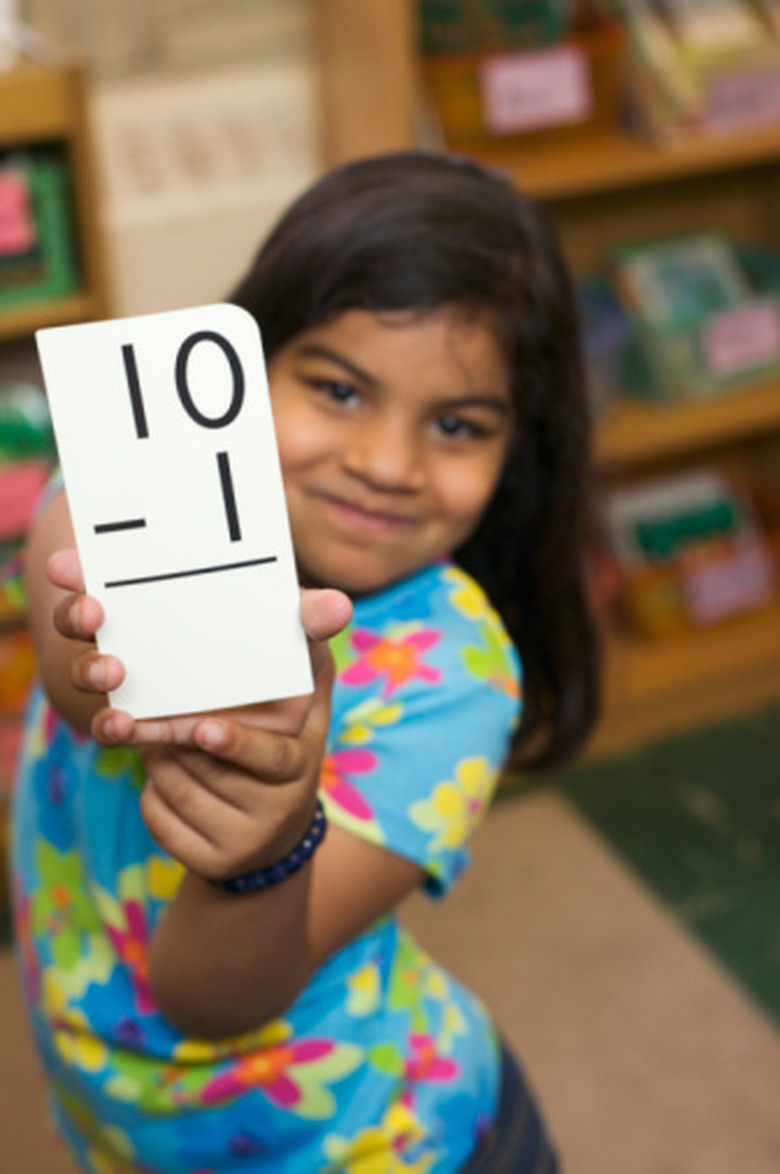How To Borrow When Adding & Subtracting Fractions
A mixed number has a whole number and a fraction. A fraction is a number that is less than whole and that has a denominator underneath a numerator. To add or subtract mixed numbers, add or subtract the fractions, then add or subtract the whole numbers. If the fraction portion of a mixed number, such as 2 5/6, is more than the fraction portion of the mixed number you're trying to subtract from, such as 3 1/6, you must "borrow" from the whole number of the mixed number you're trying to subtract from to make its fraction bigger.
Step 1
"Borrow" 1 from the whole number 4 in the first mixed number in the equation 4 1/4 – 2 3/4 by subtracting 1 from 4. This leaves 3 as the whole number in the first mixed number in the equation.
Step 2
Convert the 1 you subtracted from 4 into a fraction with a denominator of 4. This equals 4/4.
Step 3
Add 4/4 to the fraction of the first mixed number: 4/4 plus 1/4 equals 5/4. The equation now equals 3 5/4 – 2 3/4.
Step 4
Subtract the fraction portions of the mixed numbers: 5/4 minus 3/4 equals 2/4.
Step 5
Subtract the whole numbers: 3 minus 2 equals 1. This leaves 1 2/4.
Step 6
Find the largest number that divides evenly into the numerator 2 and denominator 4 to reduce the fraction 2/4 to its lowest terms. The largest divisible number is 2.
Step 7
Divide both the numerator and denominator by 2: 2 divided by 2 equals 1, and 4 divided by 2 equals 2. This leaves 1 1/2 reduced to its lowest terms.
Cite This Article
MLA
Keythman, Bryan. "How To Borrow When Adding & Subtracting Fractions" sciencing.com, https://www.sciencing.com/borrow-adding-subtracting-fractions-8129911/. 24 April 2017.
APA
Keythman, Bryan. (2017, April 24). How To Borrow When Adding & Subtracting Fractions. sciencing.com. Retrieved from https://www.sciencing.com/borrow-adding-subtracting-fractions-8129911/
Chicago
Keythman, Bryan. How To Borrow When Adding & Subtracting Fractions last modified March 24, 2022. https://www.sciencing.com/borrow-adding-subtracting-fractions-8129911/
